How NATO Undermined a Peace Agreement in Ukraine
Ukrainians are beginning to understand that the ongoing destruction of their country was not necessary.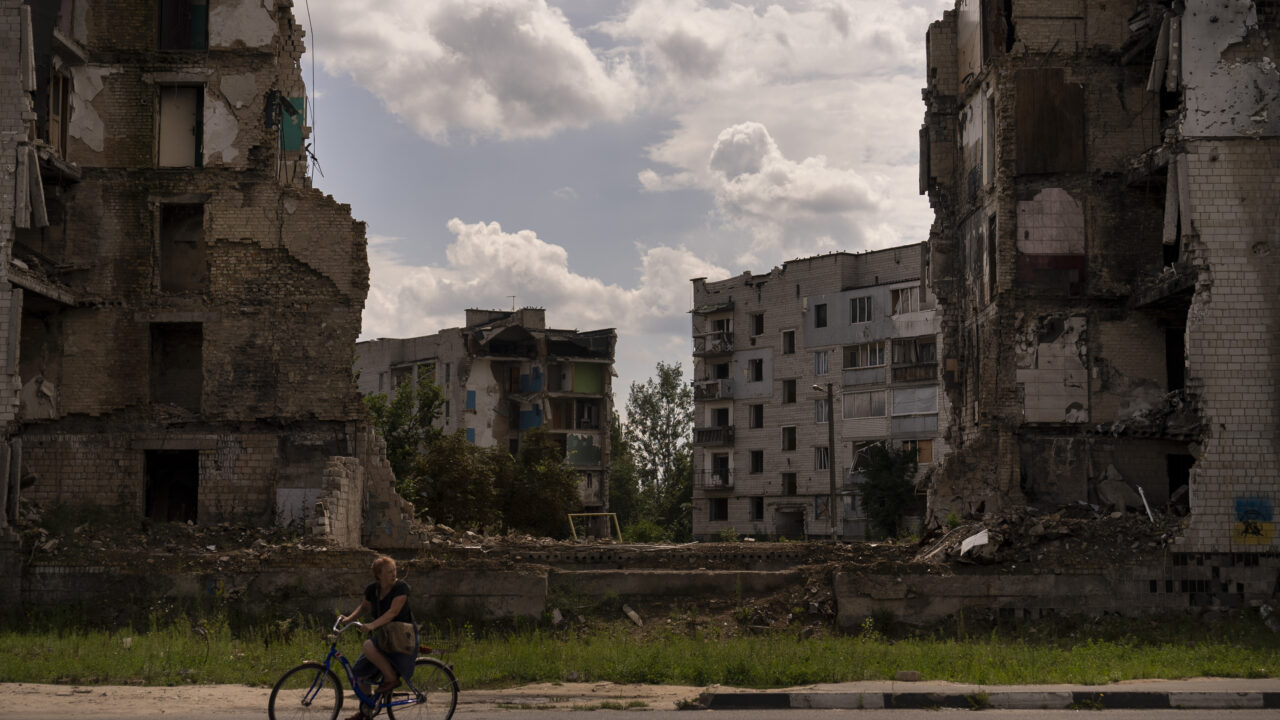 A woman rides her bike past an apartment building destroyed in Russian attacks in Borodyanka, Ukraine, Wednesday, Aug. 2, 2023. (AP Photo/Jae C. Hong)
A woman rides her bike past an apartment building destroyed in Russian attacks in Borodyanka, Ukraine, Wednesday, Aug. 2, 2023. (AP Photo/Jae C. Hong)
Editor’s note: The following story is co-published with Matt Bivens’ Substack newsletter, The 100 Days.
There’s a haunting video out there of Ukrainian military conscripts being serenaded by a young woman. It takes place in a drab auditorium. The men, their heads newly shaven, sit in red faux-velvet chairs, glum and bored, some looking at their cell phones, clearly wishing they were anywhere else.
And for conscripts, they are old. Many appear to be in their 40s or 50s:
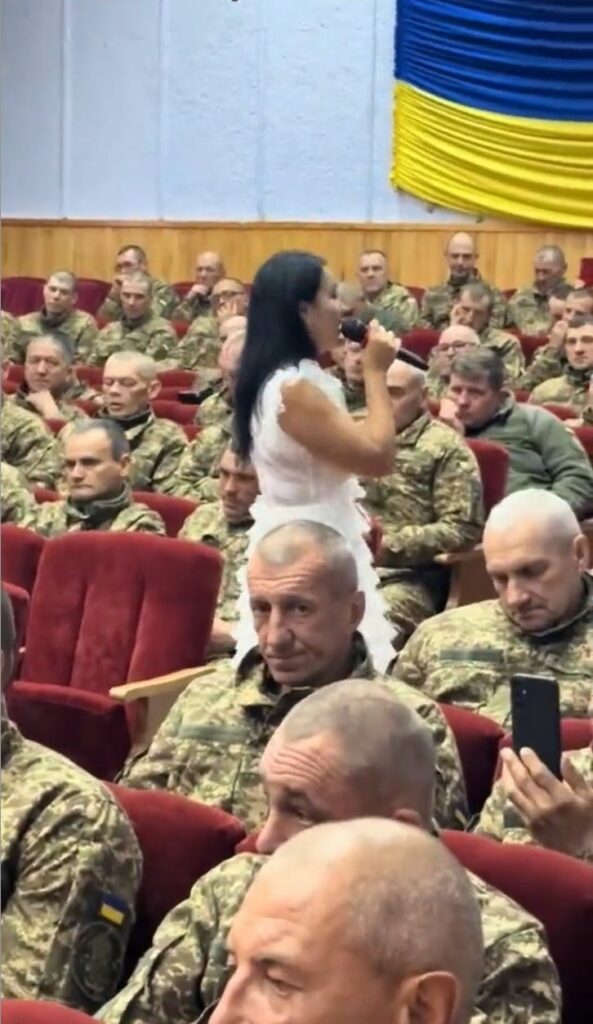
We’re coming up on the two-year mark of this completely avoidable and utterly mismanaged disaster. The beautiful Ukrainian countryside is devastated. Enormous sums of money, and the lives of hundreds of thousands of young soldiers, have been squandered. Millions have fled Ukraine, including many of the young men. The old men — those too tied to their communities to go into hiding from the draft — are who’s left to carry on the fight.
And now, we’ll waste their lives, too.
America Provoked and Fed This War
What I want to address today is the burden of guilt that the United States bears for this pointless tragedy.
First, Washington arrogantly blew off a long series of Russian warnings — escalating warnings, year after year — that Russia would go to war if we continued to try to pull Ukraine into the orbit of Western militaries and defense contractors. The Russians objected to the idea of Ukraine joining the North Atlantic Treaty Organization (NATO); and more specifically, they objected to ongoing U.S. covert and overt involvement in Ukraine’s frequent political crises, and in its civil war in the Donbas.
(Is it surprising that Russia objects to NATO, a hostile military alliance, scheming and skulking on its doorstep? Decades ago, when Cuba joined in an anti-American alliance with the Soviet Union, we were so infuriated at the idea of a nuclear-armed power sneaking around on our doorstep that we took the world to the brink of annihilation.)
NATO is a confusing term. It sometimes refers to the collective Western nation members, sometimes to a concrete, bureaucratic organization. Focusing on the latter, “NATO the Organization” does many things — one of which is to act as a marketing and sales division of Western arms manufacturers.
“NATO exists to manage the crises created by NATO.”
“NATO the Organization” relentlessly hounds each of its member states to pony up cash for military spending equal to 2% of a nation’s annual economic activity (and then insists that at least 20% of that gets spent specifically on arms and equipment, as opposed to, say, personnel costs). NATO calls this its 2/20 goal: 2% of each nation’s GDP for the military, and 20% of that specifically for defense contractors.
Each new member country solemnly commits to NATO’s made-up, arbitrary 2/20 goal. Each also agrees to make its existing arsenals interoperable with NATO standards. In other words, whenever NATO absorbs a new country — as has occurred on 19 different occasions since the alliance was originally founded after World War II — it’s a billions-of-dollars bonanza for Western defense contractors upfront, followed by a guaranteed steady annual revenue stream of billions more.
That’s a lot of money. It funds lobbyists, and it grooms war-mongering politicians, in Congress and elsewhere. It creates a political class fed on military-adjacent profiteering. That class knows all too well that adding NATO members means fat bonuses all around. And if expanding NATO ultimately provokes a war? Well, that’s profitable, too. Which is why a common saying is that “NATO exists to manage the crises created by NATO.”
Several years before the horrific Russian invasion of 2022, the U.S. government was already pouring guns and ammo into the Donbas. It was Donald Trump’s team who greenlit hundreds of millions of dollars in weapons for that Ukrainian civil war — President Barack Obama had declined to do so. Obama’s reasoning was sound: Russia will always care more about its own backyard, and thus it will always match any escalation of violence we offer; we will never win at that, but the Ukrainian people will certainly lose.
Then came Trump, and suddenly, any Obama decision was worth reversing. U.S. weapons started shipping out for the Donbas. In a typical moment from that era, Senators John McCain, Lindsey Graham and Amy Klobuchar stood shoulder-to-shoulder with the then-Ukrainian president, Petro Poroshenko, to address Ukrainian soldiers and talk tough about escalating their civil war against Russia-backed separatists.
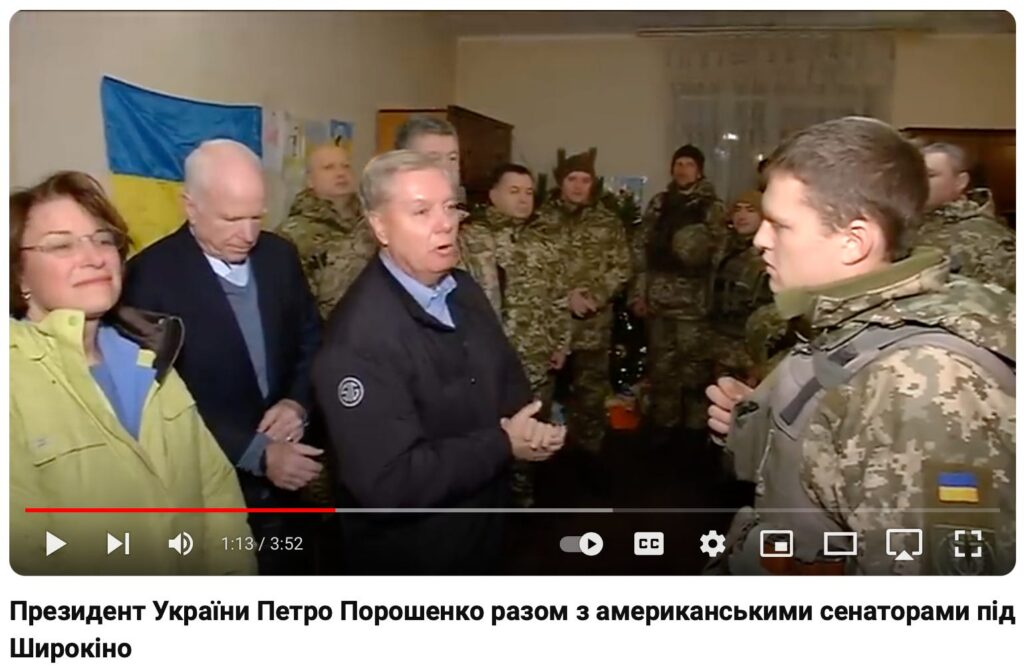
“Your fight is our fight! 2017 will be the year of offense!” said Graham then. “All of us will go back to Washington, and we will push the case against Russia. Enough of Russian aggression! It is time for them to pay a heavier price.”
There was near-zero U.S. public knowledge of our growing military entanglement with Ukraine, until Trump’s first impeachment trial (which, you may hazily remember, hinged on allegations that Trump used those weapons shipments as leverage, to pressure the Ukrainians to dig up dirt about Hunter Biden’s sketchy-looking $1 million-per-year job at a Ukrainian oil company).
Amid all of the gnashing of teeth and hyperventilating then about Trump’s call to Volodymyr Zelensky, our media-political class hardly bothered to ask if it was smart to fuel a shooting war in Eastern Europe — to send U.S. bombs and bullets to be used for killing Russians and Ukrainians.
The final year before the Russian invasion was one of escalating, tense diplomacy — a time when the Russians repeatedly asked for the U.S. and NATO to stop our CIA covert ops and other provocations and get out of Ukraine — or to at least negotiate about that situation — and Washington repeatedly brushed them off.
And when Russia finally did invade?
At that point, we rubbed our hands together gleefully, and poured exponentially more weapons and money into the conflict. The war metastasized to a far greater size and scale. Congress spent more on this new war in Ukraine than it did on roads and bridges for America. U.S. war profits soared. Soon, we were treated to surreally instructive scenes like that of the U.S. President speaking from a podium at a munitions factory in Alabama, surrounded on stage not by fellow human beings, but by missiles all standing at attention in place of people.
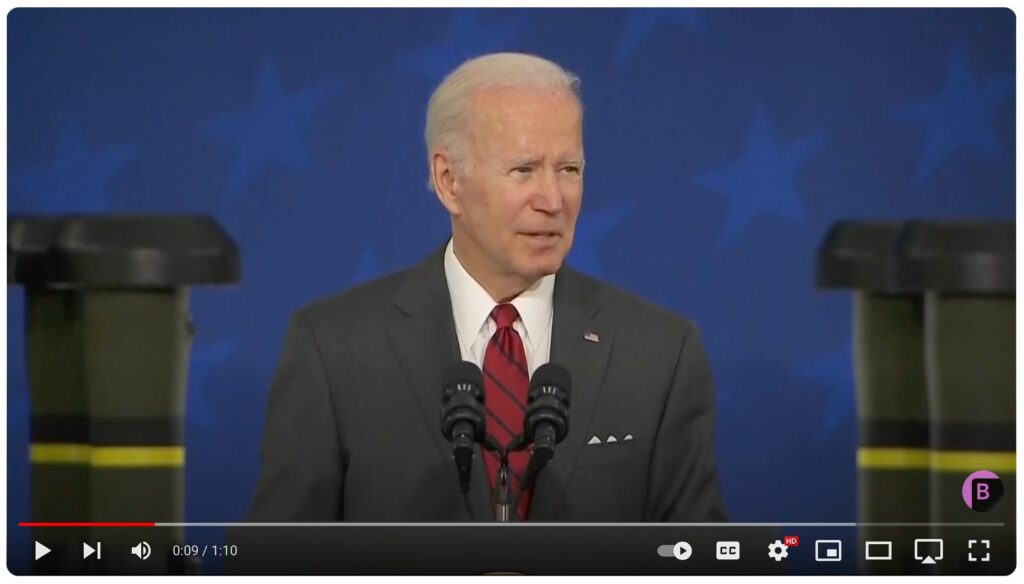
Biden’s paean to the missiles looking over his shoulder is right up there with the legendary Donald Trump sales pitch for Trump Steaks™. Reading from a teleprompter, he tells the factory workers that Ukraine is receiving
“Javelin™ missiles — like the ones manufactured right here in Pike County. They’re highly portable! They’re extremely effective, against a wide range of targets! They can hit targets up to 400 meters away! And have a ‘fire and forget’ capability!”
Such infomercial gushing aside, it was obvious from Day One of the war that Ukraine would not — could not — stop Russia. Ukraine is three times smaller, and has an even-smaller military footprint. That’s a math problem with a simple answer. Encouraging Ukraine to aspire to victory was equivalent to handing a 10-year-old a baseball bat and egging him on to fight against a silverback gorilla. But that’s what we did.
And now that the war is approaching an inevitable turning point — to continue with a strained analogy, now that the silverback gorilla has beat the 10-year-old senseless — the war-profiteering sales pitch is more cynical than ever.
The White House can no longer convincingly claim it’s helping Ukrainians when it demands another $60 billion “for the war.” So, it’s switched to claiming it’s helping Arizonians and Pennsylvanians:
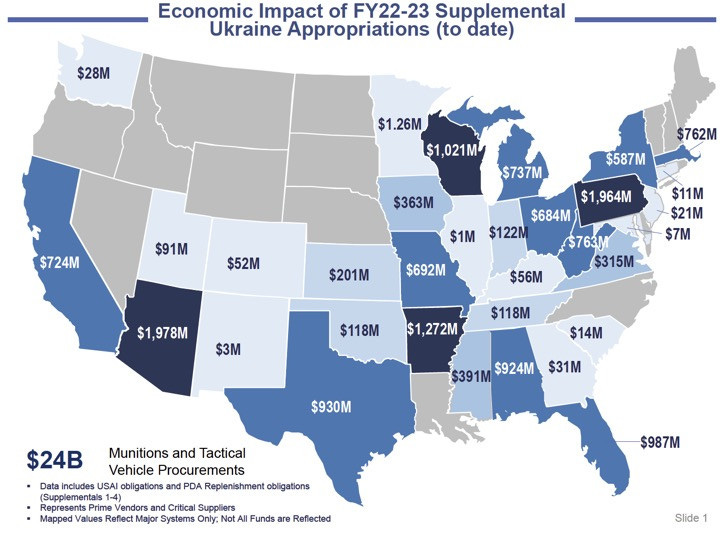
They’ve also adopted the shrillest of scare tactics. President Joe Biden this week, berating Congress for not supporting his latest request for billions more for Ukraine, raised the specter that this disgusting new American weakness would lead to “something that we don’t seek and that we don’t have today: American troops fighting Russian troops.” In a classified briefing to Congresspeople, Biden’s defense secretary echoed that, reportedly demanding they vote more money for the Ukraine war effort or “we’ll send your uncles, cousins and sons to fight Russia.”
We Forced Ukraine to Tear Up a Signed Peace Agreement
Which brings us to the second great, damning charge against Washington: Mere days into the war, there was already a grave danger: the possible outbreak of peace. Such a development would have derailed the defense contractor gravy train. It would have also dashed the lunatic dreams of men like Raytheon board member-turned Defense Secretary Lloyd Austin that we could use this moment — this wonderfully convenient Ukraine war — to “weaken Russia.”
Russia had been startled by the assertive Western response to their invasion. They were clearly alarmed, and almost immediately willing to negotiate. In fact, as the Kremlin spokesman Dmitry Peskov said on day 12 of the war — day 12! — Russia was ready to stop all military operations “in a moment” if Ukraine would meet their main demands — chief among them, that same old plea to keep NATO out of Ukraine.
In these first days of the war, President Zelensky was also motivated to end the fighting. Two years before the invasion, he had run as a peace-with-Russia candidate. Ukrainians had applauded, and he won a landslide election in 2019 promising to end the civil war in the Donbas. But as soon as he tried to reign in his own supposedly pro-government fighters there — as a prelude to negotiations with the Russia-backed separatists — his own side mocked him for wanting to “capitulate”, and even threatened to kill him. (Remember, these were the same fighters so lavishly praised and funded by war-mongering U.S. Senators like McCain or Graham.)
There’s iconic video of Zelensky on a tour of the Donbas front lines, where he gets into an angry argument with a low-level member of the neo-Nazi Azov battalion, who rather than obey his orders keeps changing the subject. Responses to that nationally-viewed exchange included a member of parliament suggesting that next time Zelensky visited the front, someone should kill him with a hand grenade.
In a classified briefing to Congresspeople, Biden’s defense secretary echoed that, reportedly demanding they vote more money for the Ukraine war effort or “we’ll send your uncles, cousins and sons to fight Russia.”
After that came the Trump impeachment, discussions of which showed the U.S. foreign policy establishment was fully united behind Ukraine’s war-fighters, and not her peace-makers. Zelensky was on his own; Washington would emphatically not have his back if he tried to negotiate a peace with Putin. With the peace process in Donbas thus effectively dead, the Kremlin soon launched an invasion to settle the matter itself — and ran straight into a surprising wall of Western condemnation and resolve. Not even shrill Russian threats to use tactical nuclear weapons (if it came to that) seemed to impress anyone. The situation seemed beyond scary.
In this context, Russian and Ukrainian negotiators met in Istanbul, and very rapidly came to a peace agreement. It was set in writing, and both sides found it tentatively acceptable.
Was the war about to be over? Was it to be a few weeks of fighting — a way of Russia making its point that it wanted NATO out — like we had wanted the Cuban Soviet missiles out — and forcing that Zelensky-promised reboot of negotiations over the Donbas?
No. Washington’s schemers leapt into action, and actively sabotaged this promising peace agreement.
That’s right. Beltway insiders overruled the Russians and the Ukrainians, and sent them both back to work on our war.
I’ll get into the details documenting this below. For now, let’s just appreciate the hypocrisy of all of our talk about “Ukrainian agency,” and our pledge to take “No decisions on Ukraine without Ukraine”. This war served the needs of the United States of the military-industrial complex, and so it was way too important to have its fate decided by an Eastern European peasantry.
If you were a supporter of providing arms and money to Ukraine because you felt sympathy for the people there, for their suffering — this was another moment when you were betrayed, when your trust was betrayed.
Hundreds of Thousands Dead, It’s the ‘Best Money We’ve Ever Spent!’
That the White House stepped in to torpedo peace talks for its own ghoulish ends has been attested to now by everyone from top Ukrainian officials and U.S. foreign policy scholars to a former German chancellor and a former Israeli prime minister.
“The Ukrainians did not agree to peace because they were not allowed to. They first had to ask the Americans about everything they discussed,” said former German Chancellor Gerhard Schroder, in an interview with the newspaper Berliner Zeitung. Schroder participated in mediating the peace talks. He says, “My impression is that nothing could happen because everything else was decided in Washington.”
Former Israeli Prime Minister Naftali Bennett also participated in the talks, and when asked about this, he agreed the West had sabotaged the process. “Basically, yes. They blocked it, and I thought they were wrong.”
Russian President Vladimir Putin has echoed some of this. Over the summer, in a meeting with leaders of African nations, Putin held up a document he said had resulted from the March 2022 peace talks in Istanbul. “This draft agreement was initialed by the head of the Kiev [sic] negotiation team. He put his signature there. Here it is,” TASS quoted Putin as saying, while pointing to the signature.
In fact, this was an open secret even at the time. An April 2022 article in The Washington Post was pretty blunt about it. It was headlined:

Got it? The literal headline of The Washington Post says “NATO says” — whatever NATO means, in this context — it is going to “limit” what Ukraine gets “to decide” about any peace deals!
“Ukraine’s Western backers have vowed to respect Kyiv’s decisions in any settlement to end the war with Russia,” The Post reported, “but with larger issues of global security at stake, there are limits to how many compromises some in NATO will support to win the peace.” …
“Even a Ukrainian vow not to join NATO — a concession that Zelensky has floated publicly — could be a concern to some neighbors. That leads to an awkward reality: For some in NATO, it’s better for the Ukrainians to keep fighting, and dying, than to achieve a peace that comes too early or at too high a cost to Kyiv and the rest of Europe.”
In other words: The war was always too important to stop just to benefit Ukraine.
What has been the cost of all this?
Official Ukrainian military casualties are a state secret. But The New York Times, citing U.S. government sources, estimates 70,000 Ukrainian soldiers have been killed, and another 120,000 or so have been severely wounded. That’s nearly 200,000 men killed or maimed, and equivalent to about 40% of their entire military force.
Young Russian conscripts have been dying at an even greater rate. That’s the bright side only if you are a sociopathic U.S. Senator like Lindsey Graham or Mitt Romney — Graham, with a beaming grin, celebrates how “the Russians are dying,” congratulates the Ukrainians for “fighting to the last person”, and calls it “the best money we’ve ever spent!” Romney echoes that, crowing, “It’s the best national defense spending we’ve ever done!” and adding that, from an American perspective, “We’re losing no lives in Ukraine!”
Half a million young Slavic men — Russian and Ukrainian — have been killed or maimed.
Millions of families have become refugees.
Our government saw this tragedy coming and welcomed it.
And when there was a chance that cooler heads could prevail and the war end, our government made sure the war continued.
Where is the journalism about this? Where is the detailed insider reporting about who in the Biden Administration brought what pressure or trickery to bear against the Zelensky team, to get them to renounce this peace deal? No doubt it’s in the same dusty, basement file cabinet as the reporting about who blew up the Nord Stream pipeline.
‘300,000 Might Be Alive, and Ukraine Not Destroyed’
Already there are prominent voices in Ukraine that blame America for this. They say that by forcing the Ukrainian government to walk away from the Istanbul talks, we locked in the ensuing deaths of hundreds of thousands of young people.
Oleksii Arestovych, who participated in the talks as a top aide to President Zelensky, is among those who have confirmed they were on the verge of ending the war after just a few weeks of fighting.
“Let me tell you, the Istanbul peace initiatives were really not bad [for Ukraine],” he said. The only sticking point, he said, was Russian insistence that Ukraine not formally join NATO. “They said, ‘No NATO, not under any circumstances, that is a red line for us’.”
“But if only [Ukraine had accepted that condition], some 200,000 or, how many, 300,000, might be alive today. And half of Ukraine would not have been destroyed, or turned into a minefield.”
Arestovych expresses exasperation at the idea of continuing the war purely to insist upon Ukraine’s right to join NATO — when NATO wasn’t even offering membership! Sure, NATO-friendly politicians had for years repeatedly floated the idea, but it was only irresponsible public flirting — a side-effect of reflexive, ongoing lobbying by defense contractors, really. (Zelensky himself, in the midst of these peace talks, told ABC News, “Regarding NATO, I have cooled down regarding this question a long time ago, after we understood that NATO is not prepared to accept Ukraine [anyway].”)
Otherwise, Arestovych reports, the Russians offered significant concessions to the Ukrainians, even expressing willingness to negotiate the future status of Crimea (!). “We also offered concessions, but let me tell you, the number of concessions [the Russians] offered was unprecedented. That won’t happen again.”
Arestovych, a former presidential spokesman and popular YouTube personality, has been described by the BBC as “one of the most public Ukrainian faces of the war.” He resigned as an adviser to Zelensky earlier this year and has since announced he’ll run for president against him (although with the war underway, it’s unclear when the next election will be held).
His assertions are echoed by Davyd Arakhamiia, who was head of the peace talks from the Ukrainian side. Arakhamiia is a close ally of Zelensky’s: In addition to leading the peace talks, he heads a Ukrainian parliament faction called “Servant of the People” in honor of the hit Ukrainian TV show that made actor Zelensky famous.
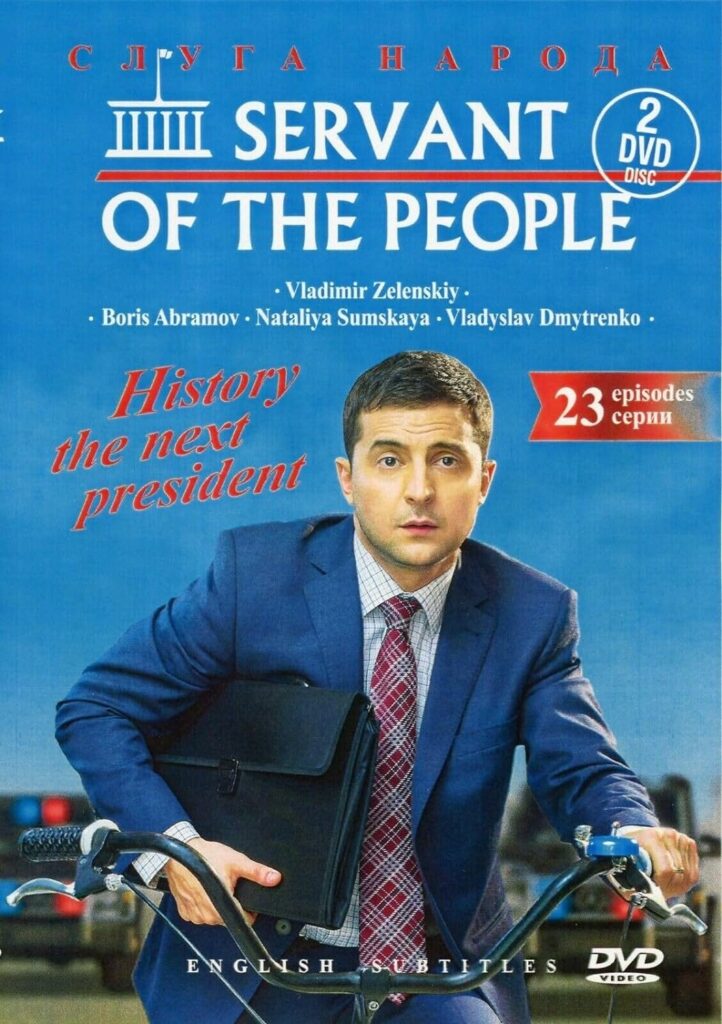
“[The Russians] were ready to end the war if we accepted neutrality, like Finland once did. If we would make a commitment that we would not join NATO,” Arakhamiia says in a recent interview.
However, he continues, “When we returned from Istanbul, [then-British Prime Minister] Boris Johnson came to Kyiv and said: ‘We will not sign anything with them at all, and let’s just fight on’.”
It’s fascinating to read the comments posted on social media beneath the videos of interviews with Arestovych or Arakhamiia. They are in English, Russian and Ukrainian — and they are filled with rage for how the West collaborated in the wrecking of Ukraine. It’s a discussion you won’t find, yet, in American media.
Anonymous U.S. officials have confirmed this general narrative. Last year, an article in Foreign Affairs by two scholars from the Brookings Institution reported:
“According to multiple former senior US officials we spoke with, in April 2022, Russian and Ukrainian negotiators appeared to have tentatively agreed on the outlines of a negotiated interim settlement: Russia would withdraw to its position on February 23, when it controlled part of the Donbas region and all of Crimea, and in exchange, Ukraine would promise not to seek NATO membership and instead receive security guarantees from a number of countries.”
This was very nearly a return to the status quo prior to the invasion. It was probably the best deal anyone would ever get. Yet there was zero support in Washington for those talks. They were barely even reported by our media. And now we know, from German, Israeli and Ukrainian officials involved, they were shut down — at American insistence.
Eighteen Months of Needless Death
Russia and Ukraine were ready to end this war eighteen months ago.
We prevented that.
If the White House had allowed it, Ukraine and Russia would have likely struck that deal. Russia would have probably kept Crimea; Ukraine would have declared international neutrality from military blocs, enraging our defense contractors; the ethnically-more-Russian Donbas and Luhansk would have remained in Russia’s orbit.
Note that this would have been a massively improved outcome for Ukraine from the scenario we have “achieved” two years later, at the cost of so much suffering.
And that’s now. Wait until spring. Russia, angrier then when the war started, stronger than ever, less in the mood for compromise, and newly contemptuous of Western weakness, may well decide to press on to take Odessa before it’s ready to talk again. (Or even Kyiv, with the idea of leaving only a Galician Ukrainian rump state).
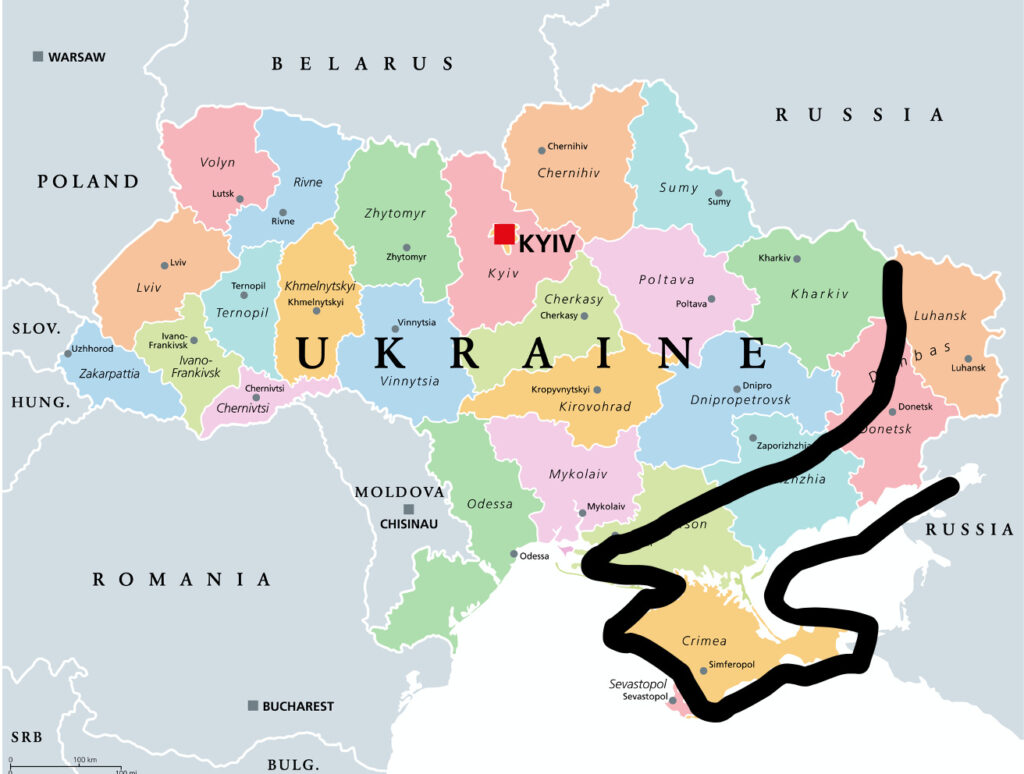
It’s incredible that first by provoking and welcoming a war, then by blocking a peace, the United States has helped engineer the killing or maiming of perhaps 500,000 young men — and yet the war is not even close to over. The West may be fatigued with it, and suddenly murmuring wisely and sheepishly about the need to negotiate a peace. But the Russians are ascendant, and many, many thousands more deaths are likely coming this winter and spring. In fact, the only real hope to prevent another mass annihilation of young Slavs by the tens or even hundreds of thousands rests upon whatever generosity, mercy or statesmanship we might see from, of all people, Vladimir Putin.
Your support matters…Independent journalism is under threat and overshadowed by heavily funded mainstream media.
You can help level the playing field. Become a member.
Your tax-deductible contribution keeps us digging beneath the headlines to give you thought-provoking, investigative reporting and analysis that unearths what's really happening- without compromise.
Give today to support our courageous, independent journalists.
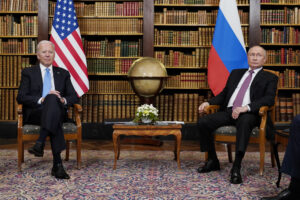
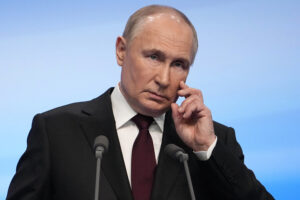

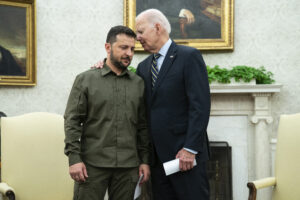
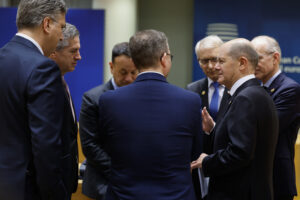
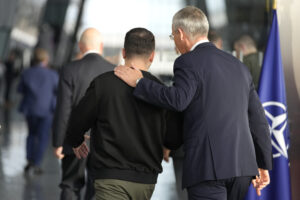
You need to be a supporter to comment.
There are currently no responses to this article.
Be the first to respond.